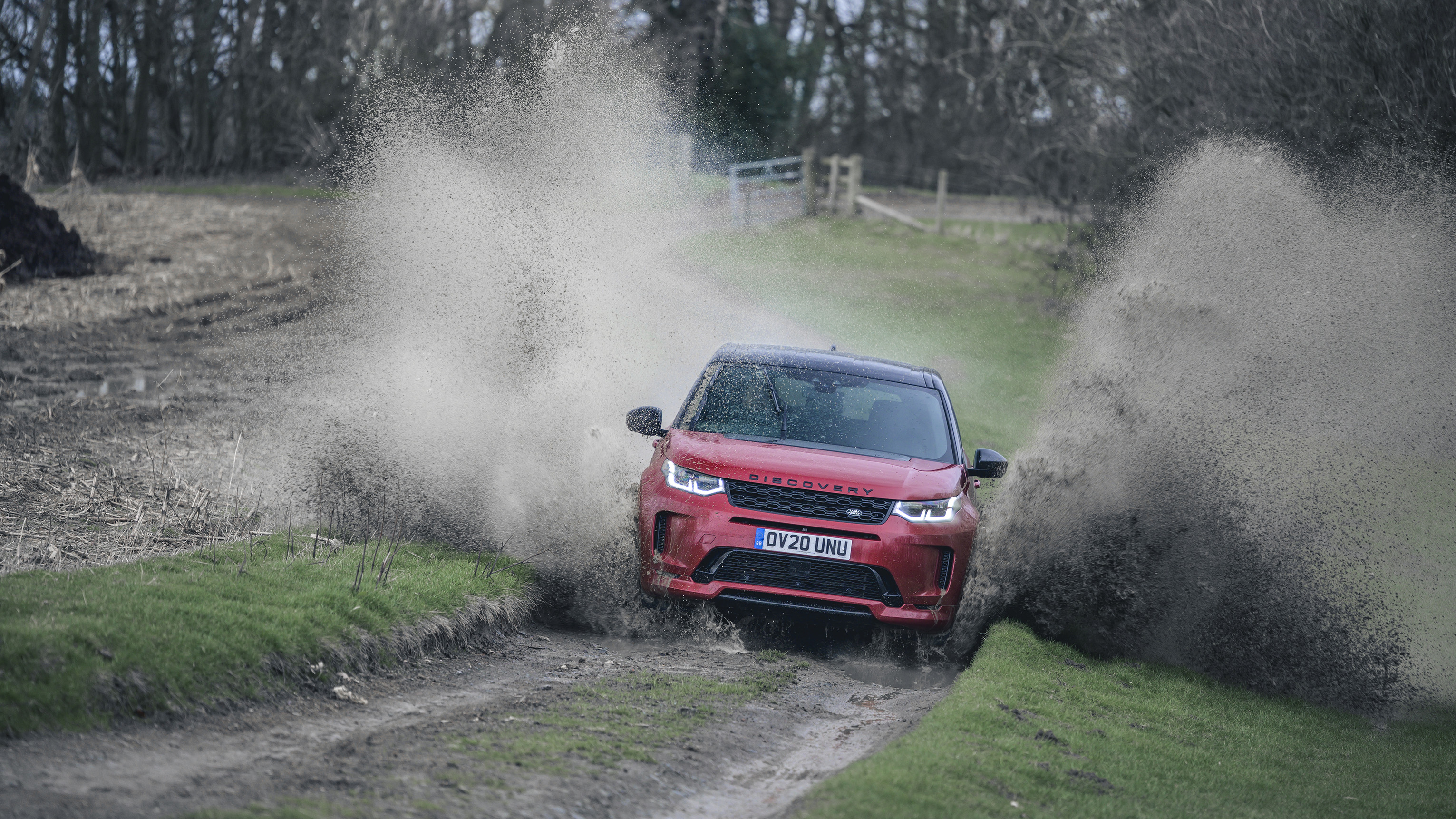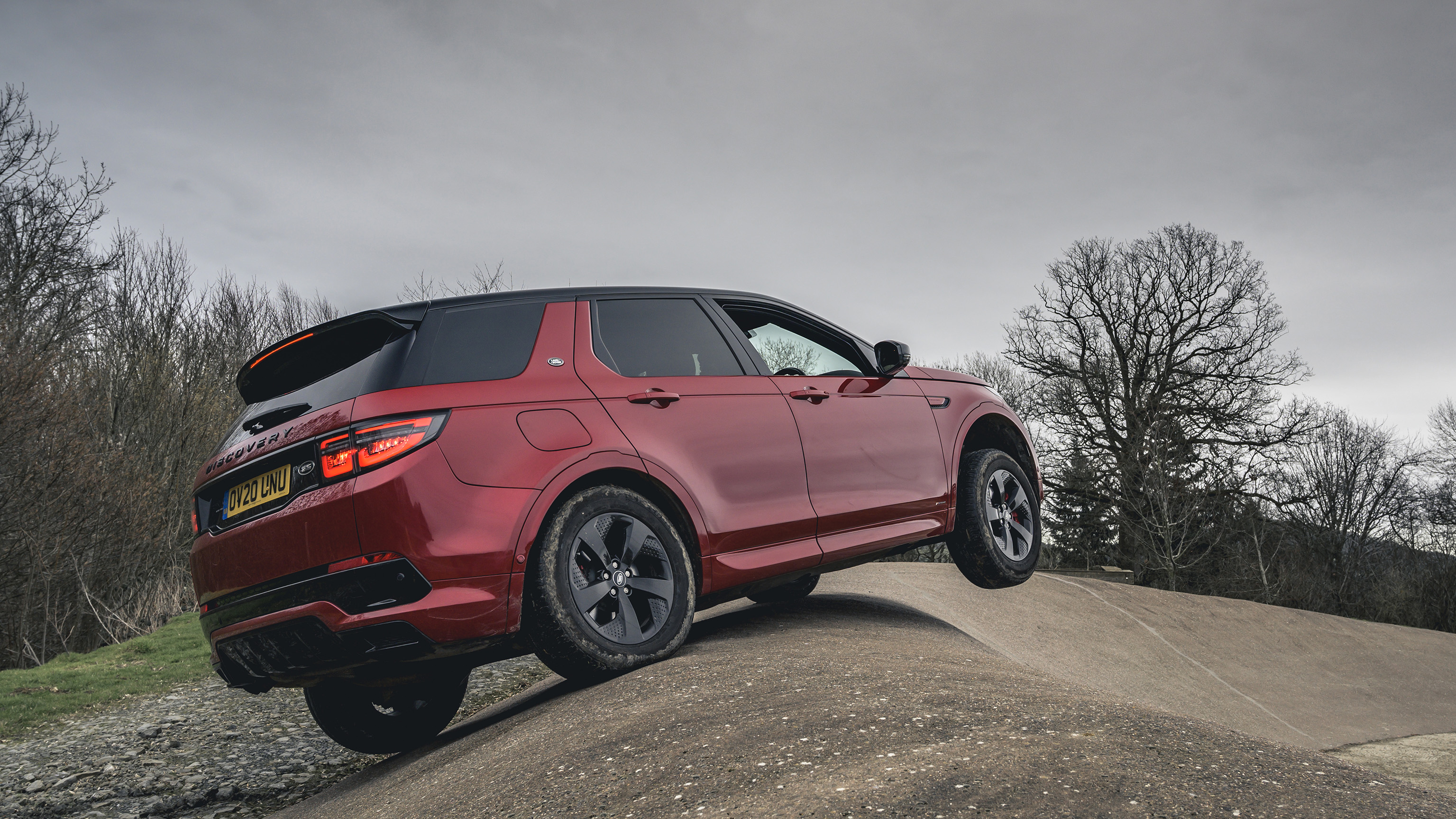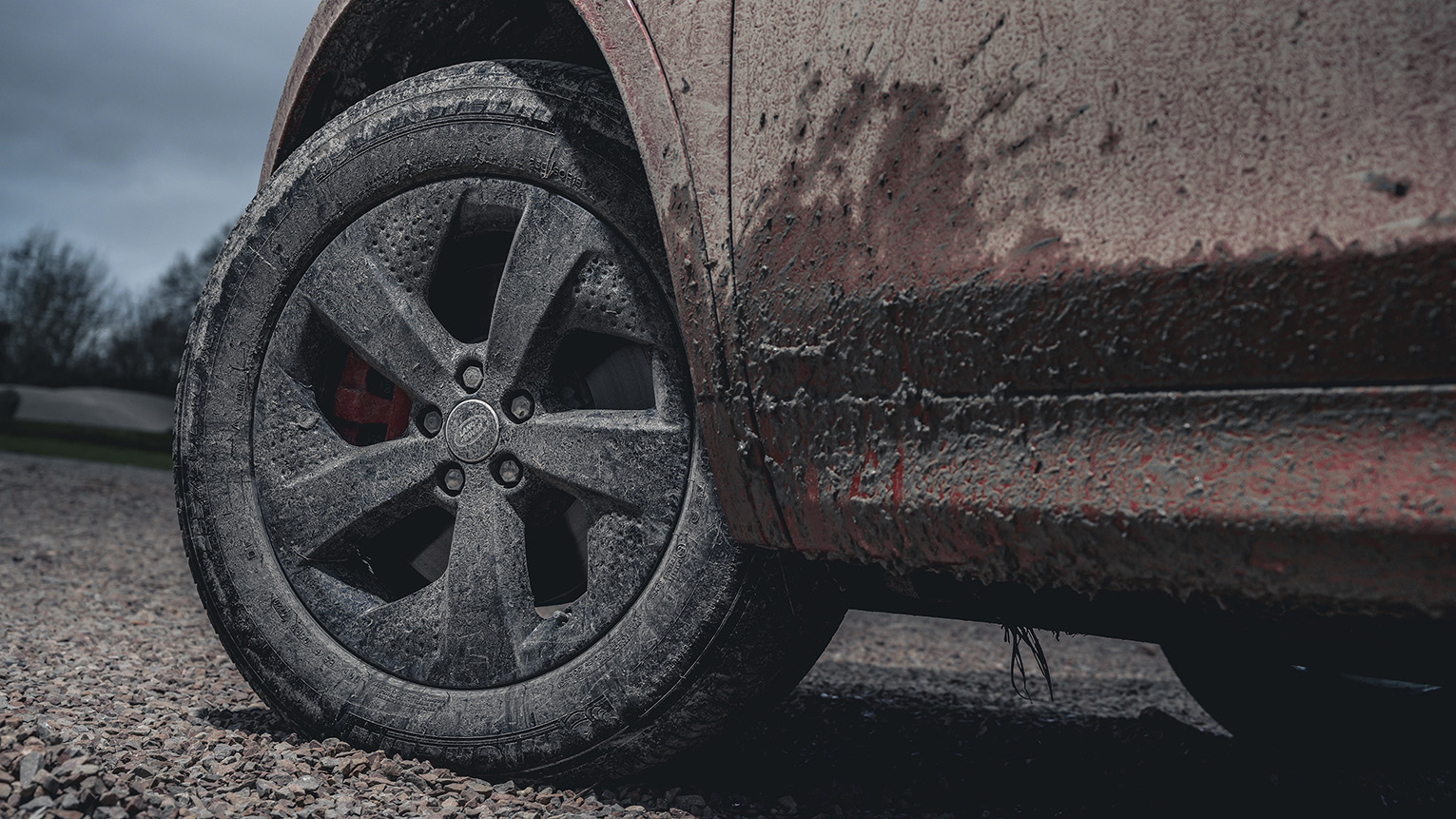
Land Rover Discovery Sport – long-term review
£50,635 / £58,990 as tested / £570 PCM
SPEC HIGHLIGHTS
- SPEC
D240 AWD HSE R-Dynamic
- ENGINE
1999cc
- BHP
240bhp
- 0-62
7.7s
Farewell Disco Sport: a true Land Rover off-road great?
A small asterisk is a window into a world of half-truths. A get-out clause that allows a company or advert to stab the best possible features into your mind’s eye, asterisking the minute small print somewhere towards the bottom of whatever page you’re reading, the stuff that says ‘only if you spend twelvety thousand pounds more of your hard-earned money, pauper’. Thus you can have ‘available from’ next to performance figures that you only achieve with the car that’s twice the price. It’s marketing sleight-of-hand, promotional distraction magic.
But at Top Gear, we are not fooled. And so, in a weird month of absolutely unscientific deconstruction, we have subjected our long term Garage Land Rover Discovery Sport to some rigorous real-world testing. To see if it can actually do what it says it can do. Welcome to the lie detector.
I started with the obvious stuff; speed and efficiency, based off LR’s own figures for this model, in pretty much this spec. Half a tank of fuel and me where possible, car more than run-in at 8k miles, nothing else in the car. Acceleration: the official number is 7.9 seconds, and try as I might, I could only manage 8.8. And yes, that was attempting different ‘launch styles’, with good grip and ambient temperatures of about 12-degrees centigrade. I haven’t been able to test to the purported 136mph top end, so I failed pretty early, though I did go moderately quickly at the track (118mph), and acceleration tails off significantly after about 110mph, though I suspect it probably would do 130+ if you had a 10-mile straight and enough geography at the other end to brake. Don’t plan on being able to achieve that top end anywhere but, possibly, Nardo.
Efficiency-wise, I’ve done speed and mpg tests (urban, cruising, combined), including 50 miles of the A1 at a steady 56mph in Eco mode - cruise control is horrendous for best-mpg by the way - three laps of Peterborough town centre (yeah, it looked dodgy) and the rest of the tank doing ‘normal’ usage. The trip computer is generally 10-12-per cent generous it seems, so I’ve been doing the old fill-trip-fill measures. It’s supposed to do 38.4mpg combined according to the manufacturer’s website (that’s in 7-seat R-Dynamic trim like this one), but I got a high of 44.1mpg, and a low (town use) of 28.1. Off road it dropped even further (26.4), bizarrely to roughly the same level as a few laps of a racetrack. Figure that one. In reality, mixed usage and my usual tame driving style offers up around 34.5mpg. So not ridiculously far off the quoted figure, and very dependent on how urgently you bomb away from rest, and how fast you cruise. Obviously.
It will swallow seven whole people, and the rearmost seats aren’t anywhere near as bad as you imagine, though 6-footers will feel like their knees are too close to their ears. There’s a big rectangular box of a boot that will accommodate bigger dogs - though not with the seven seats in place, obviously - and even fat, giant otter Labs seem to be quite happy with the space. Drop the seats and you can get three-quarters of a single-garage into it, and once you’ve got the psuedo-suede cloth seats muddy, they clean up a treat. That’s science, that is. And it’ll tow as happily as anything bar a full fat Discovery or V8 Diesel LandCruiser. So far, so good.
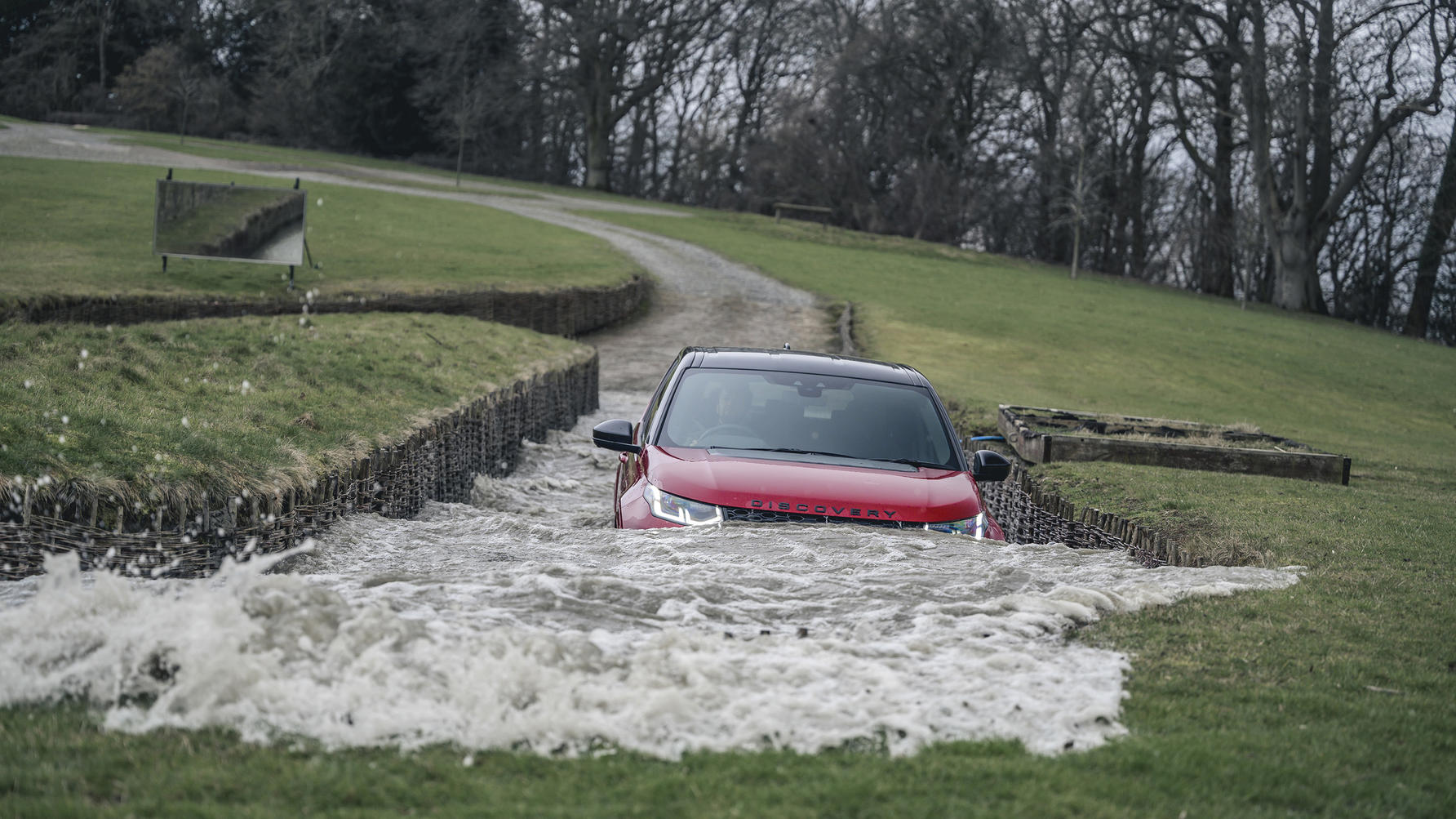
So, on balance, the Disco Sport will do pretty much what you think it will, in terms of real-world normal stuff - or at least as close as you would reasonably imagine, given that we’re all lightly cynical anyway. Certainly nothing that would stand out. On more subjective assessments, the ride is calm, the handling tidy - though not sporting - and it is a genial-but-rubbish track car. The gearbox can be clunky (LR makes a smoother six-speed), and I’ve popped a couple of items of trim back onto their clips, but generally I’ve been very happy with it. But one of the reasons you buy a Land Rover is because it manages an air of genteel capability and ability. It’s the Bear Grylls of automotive. And even if you don’t need the off-road nouse, you need to know that it can do it - it’s about the aura. After all, precious few supercar owners will ever drive them at 200mph, but the promise is there.
A fortuitous set of weather meant I could test out the low-grip ability in decent snow, including the ‘low-traction launch’ feature (works well), the ABS (works well) and the driftability (scares people, including the driver). I also took it to the beach to play in the sand, and it was more of the same: consideration and helpful electronics make everything seem much easier than it really is. It’s like a starter-pack for learning to drive off-road: select the correct Terrain Response setting and take your time. No, this car isn’t a Defender 90 on big tyres with air-locking differentials, but it also requires very little intellectual investment to get it to do 80 per cent of the same things. But even that wasn’t enough - we needed more challenges.
So it was off to Eastnor and some ‘proper’ off-roading. And by that I mean driving through/over/across features you probably wouldn’t attempt if you were on your own in a field somewhere. If you can do this stuff, then the things you may reasonably attempt should be child’s play. Albeit a child who can reasonably enact a safe winch recovery.
Right. The R-Dynamic bodykit is low enough to decrease the car’s approach angle by a couple of degrees versus a standard model, but you can get around that by being careful. And once you’ve got the car up the face of a surface, it’ll drive up pretty much anything. The Terrain Response system takes up a lot of the skillset slack, variously softening the throttle for more control, or tightening the effects of the electronic diff locks, slowing wheelspeed and maintaining momentum. I crossaxled it - diagonal wheels in the air - and it just muttered under its breath and kept going. I drove it up slippery rocks, muddy rocks, and some slippery muddy rocks, and it span the wheels lightly and continued on.
We tackled hills, and descents and farm tracks gouged out from clay earth with the grip coefficient of oiled ice. I drove it through some water that covered the wheels - and bonnet, at one point - and my feet stayed dry. The engine remained damp-free and refused the bronchial cough of incipient hydrolock. I drove it at a sideslip angle that gave me a slight headache (side angles feel WAY more scary in the car than they look), drove up and down things that were steeper than my stairs at home. I drove it across wet grass, down seriously rutted tracks, scraped it past bushes and then broke something plastic off the bottom. Though the car didn’t stop, and the breakage was caused by enthusiastic attack of a set of ruts with a big rock in the middle, which I’m not sure I can exactly blame the car for. And all this on the tyres it came on from the factory, without the get-out of air suspension.
In fact, I spent the day trying to get the Disco stuck without actually setting it up for a fall, and it foxed me. If you drive with some care, and are aware of the car’s capability, there isn’t much it won’t do. No marketing bull here - when it says it can operate off road, it can.
Which means, when the scores were totted up on the back of a Starbuck’s paper napkin, the Land Rover Discovery Sport 240 R-Dynamic passes the TG test. The marketing isn’t lying as much as simply presenting the best-case scenario, and it’s a seriously impressive bit of kit in several ways 99 per cent of owners probably won’t experience. In fact, for a non-urban family do-it-all, it’s pretty hard to beat. In the spec we have it here, it looks great but ends up being expensive, and there are lots of very enticing options in this size and price bracket.
But there’s still a convincing case for the Land Rover, even in the face of all that. It’s a car with a significant USP, that doesn’t terribly negatively affect it’s day-to-day charm. And that makes it a winner.
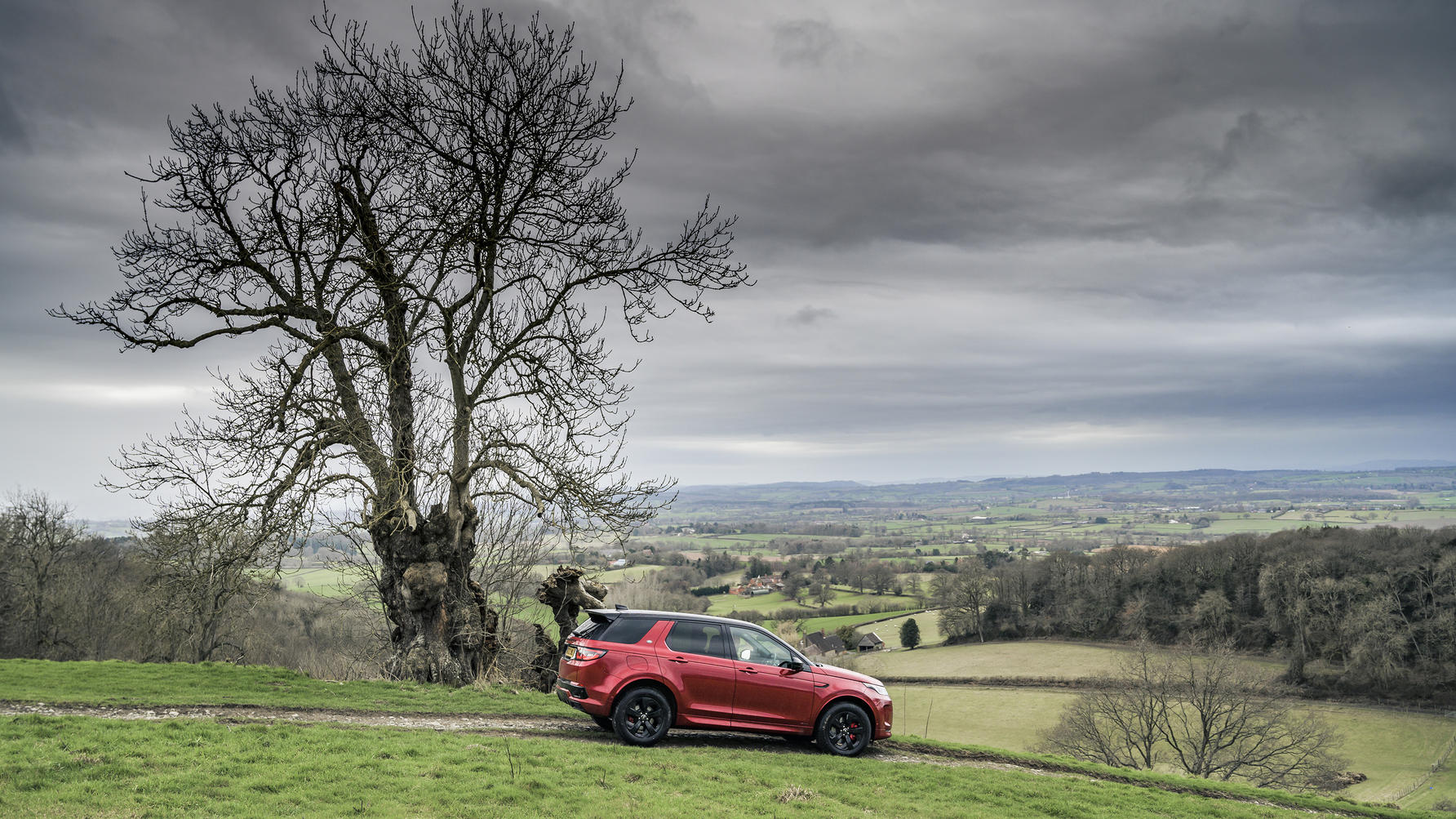
Featured

Trending this week
- Car Review
BMW 1 Series
- Top Gear's Top 9
Nine dreadful bits of 'homeware' made by carmakers




